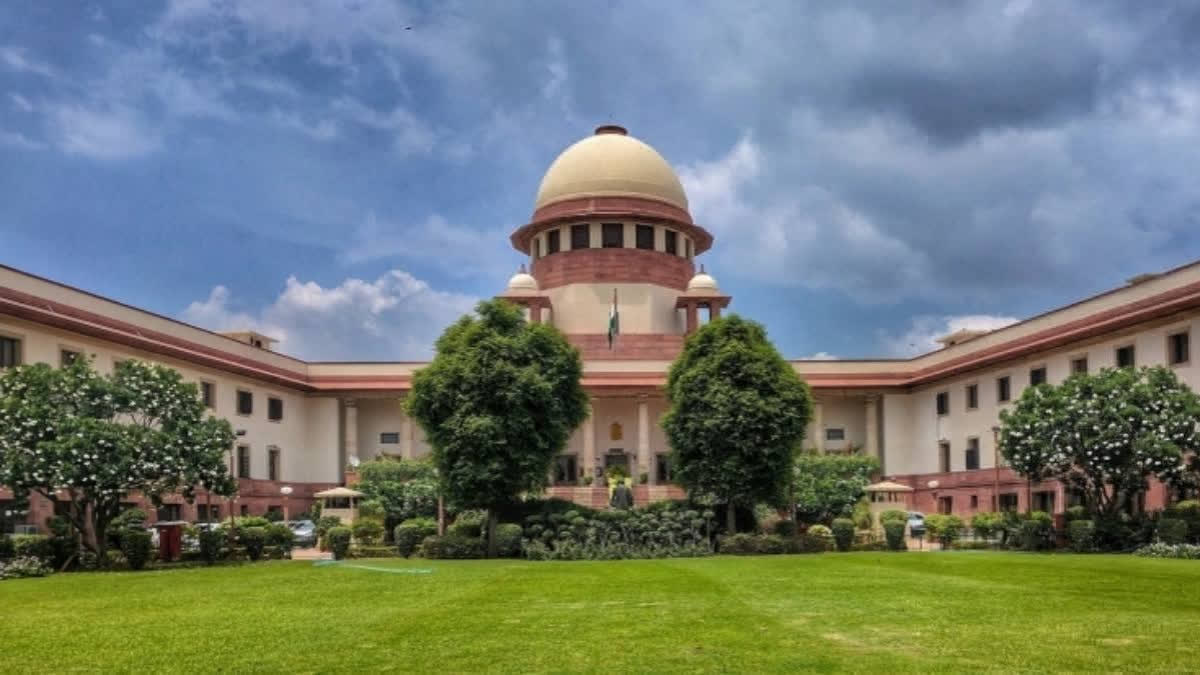Casting a wider net for the law curbing child pornography, the Supreme Court of India has recently held that even viewing, possessing, and not reporting such pornographic content is punishable under the Protection of Children from Sexual Offences Act, 2012 ('POCSO Act'), regardless of whether it is shared or transmitted further. The decision came through a division bench of Chief Justice of India DY Chandrachud and Justice JB Pardiwala, with the latter having authored the judgment.
Setting aside a judgment of the Madras High Court on this matter, the Supreme Court proffered a strict interpretation of what constitutes the offence of "storage of child pornography". The said Madras High Court judgment of January 2024 had held that "mere possession or storage" of child pornography was not an offence under the POCSO Act.
This judgment was appealed against before the Supreme Court by the NGO called Just Rights for Children Alliance, that also lent its name to the case eventually – Just Rights for Children Alliance v. S. Harish. The judgment promises to be a breakthrough, especially in curbing not just the circulation of pornographic material involving children, but also its consumption by people.
On what is punishable
At the heart of this decision are two provisions of the POCSO Act – sections 14 and 15. Section 14 penalises using a child or children for pornographic purposes with imprisonment for up to five years, and a fine. A second or subsequent conviction is punishable with imprisonment for up to seven years. Section 15 of the POCSO Act is split across three sub-sections – section 15(1) prescribes punishment for storage or possession of pornographic material involving a child – any person failing to delete, destroy, or report the same to the designated authority with an intention to share or transmit child pornography, is liable to a fine of not less than Rs. 5000/-, which could go up to Rs. 10,000/- on a second/subsequent conviction.
Under section 15(2), the transmitting, propagating, distributing or displaying of pornographic material involving a child except for the purpose of reporting or for use as evidence in court, is punishable with imprisonment or fine, or both. Section 15(3) prohibits and punishes the storage or possession of child pornographic material when done with a commercial intent.
Previously, various High Courts had held that the intent to distribute or commercially use such content was crucial for a Section 15 offence to be made out. In fact, the Madras High Court judgment that was appealed against had quashed criminal proceedings against an accused on the ground that downloading or watching child pornography was not by itself punishable under either the POCSO (or the Information Technology Act, 2000 (‘IT Act’)).
The Supreme Court has now clarified that each of the sub-sections of section 15 make provision for independent offences. Justice Pardiwala explained that section 15 provides for three 'distinct' offences that penalise the storage or possession of 'child pornographic material' when done with three separate intentions – storage or possession with the intent of eventual commercial use is an offence under section 15, and so is storage or possession, which ends up in failure to destroy pornographic material. Each sub-section of section 15 is independent of each other in determining separate offences.
Under section 15(1) in particular, the mental intent is to be gathered from the act of possession of pornographic material but not reporting it. The act of possessing the material, unless and until deleted, destroyed or reported by the accused, constitutes an offence under section 15(1). For each case, the facts and circumstances of how the possession came about would have to be uncovered.
The Supreme Court also made a pertinent clarification with regards section 67B of the IT Act, which punishes the publication or transmitting of material depicting children in a sexually explicit act, in electronic form. The Court ruled that Section 67B not only punishes “electronic dissemination” of child pornographic material but also the "creation, possession, propagation and consumption of such material."
On the obligations of social media intermediaries, and burden of proof
The Supreme Court also doubled down on the significant role played by social media intermediaries in the dissemination of child pornography. Their obligation to report the publication and circulation of such content under various laws, such as the IT Act, 2000 and the POCSO Act, was outlined. Pertinently, the Supreme Court clarified that the 'safe harbour' provision, that protects intermediaries from liability for any third-party information, data or communication link available or hosted on the intermediary, does not apply to child pornography.
Clarifications were also made on the burden of proof in offences under the POCSO Act. Section 30 of the POCSO Act states that for any offence under the Act, the Special Court shall presume that the accused had a culpable mental state. If, on the face of it, certain “foundational facts” are established against the accused, the burden is now on the accused to show that they were not guilty.
For instance, the Court noted that for an offence under section 15(1), the prosecution must only show the foundational fact that the accused was in possession of child pornography, and took no active steps to either get rid of it or report it. The burden lies on the accused to establish that they were innocent, and should not be brought within the purview of section 15(1).
On the scope and meaning of terms
Interestingly, the Supreme Court expressed apprehension towards the use of the term "child pornography", terming it a misnomer that is inadequate in capturing the full extent of the crime. The Court was categorical in saying that child pornography involves the actual abuse of the child. The use of the term "child pornography" could potentially trivialise the crime, as pornography is often seen as a consensual act between adults.
To prevent that, the Court coined the term "child sexual exploitative and abuse material", or "CSEAM" to accurately reflect that pornographic materials are records of incidents, where a child has either been sexually exploited and abused, or where any abuse of children has been portrayed through any self-generated visual depiction.
In fact, while making certain suggestions in the judgment, the Court urges Parliament to seriously consider amending the POCSO Act for substituting the term "child pornography" with "CSEAM", so as to reflect more accurately on the reality of such offences. The Supreme Court also put other courts to notice that the term “child pornography” not be used in any judicial order or judgment, and CSEAM be used instead.
Parting thoughts
In another positive development, the Supreme Court also directed the Ministry of Women and Child Development to implement comprehensive sex education programmes to create awareness on legal and ethical ramifications of child pornography. Provision of psychological counselling, therapeutic interventions, and educational support for victims of child pornography was also alluded to.
Most pertinently, this judgment puts to conclusive rest the alternative/varying interpretations of provisions of the POCSO Act which State High Courts had developed over the years. Some High Court read the separate offences of possession and distribution as making up one single offence. By reading them as separate, the Supreme Court has tightened the claws of the POCSO Act, for it to be able to punish the act of just the possession of child pornography as well.
Data released by the National Crime Records Bureau revealed that the number of reported cases under sections 14 and 15 of the POCSO Act stood over 1,200 between 2021-2022. In fact, the total number of cases in 2022 where children have been victims of cybercrimes stood at 1,823, clocking a 32 per cent increase from the previous year. Given these worrying numbers, this judgment could go a long way in bringing perpetrators to book. The judgment says all the right things – one can only hope that it is brought to its logical end by sound implementation by all authorities concerned.
(Disclaimer: The opinions expressed in this article are those of the writer. The facts and opinions expressed here do not reflect the views of ETV Bharat)



